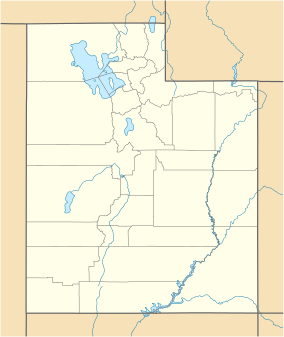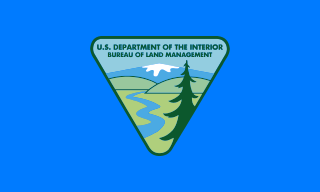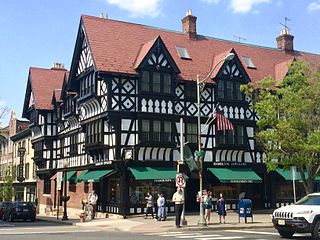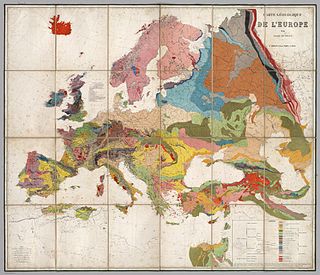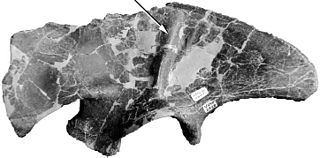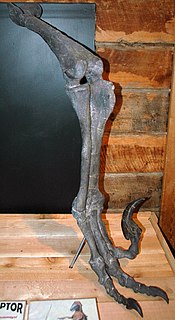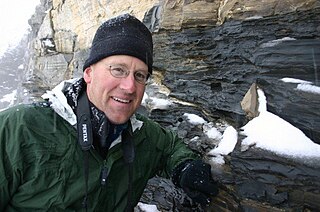| Cleveland-Lloyd Dinosaur Quarry | |
|---|---|
 Cleveland-Lloyd Dinosaur Quarry Visitor Center | |
Map of Utah | |
| Location | Emery County, Utah |
| Nearest city | Cleveland |
| Coordinates | 39°19′22″N110°41′22″W / 39.32282°N 110.68951°W Coordinates: 39°19′22″N110°41′22″W / 39.32282°N 110.68951°W |
| Governing body | Bureau of Land Management |
| www | |
| Designated | 1965 |
The Cleveland-Lloyd Dinosaur Quarry, well known for containing the densest concentration of Jurassic dinosaur fossils ever found, is a paleontological site located near Cleveland, Utah, in the San Rafael Swell, a part of the geological layers known as the Morrison Formation.
The Jurassic was a geologic period and system that spanned 56 million years from the end of the Triassic Period 201.3 million years ago (Mya) to the beginning of the Cretaceous Period 145 Mya. The Jurassic constitutes the middle period of the Mesozoic Era, also known as the Age of Reptiles. The start of the period was marked by the major Triassic–Jurassic extinction event. Two other extinction events occurred during the period: the Pliensbachian-Toarcian extinction in the Early Jurassic, and the Tithonian event at the end; however, neither event ranks among the "Big Five" mass extinctions.

Dinosaurs are a diverse group of reptiles of the clade Dinosauria. They first appeared during the Triassic period, between 243 and 233.23 million years ago, although the exact origin and timing of the evolution of dinosaurs is the subject of active research. They became the dominant terrestrial vertebrates after the Triassic–Jurassic extinction event 201 million years ago; their dominance continued through the Jurassic and Cretaceous periods. Reverse genetic engineering and the fossil record both demonstrate that birds are modern feathered dinosaurs, having evolved from earlier theropods during the late Jurassic Period. As such, birds were the only dinosaur lineage to survive the Cretaceous–Paleogene extinction event 66 million years ago. Dinosaurs can therefore be divided into avian dinosaurs, or birds; and non-avian dinosaurs, which are all dinosaurs other than birds. This article deals primarily with non-avian dinosaurs.
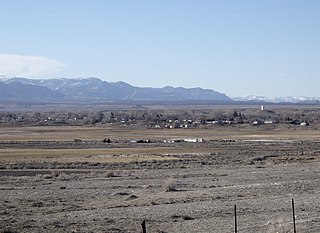
Cleveland is a town in Emery County, Utah. As of the 2010 census, the town population was 464, down from 508 at the 2000 census.
Contents
- Visiting
- History
- Geology
- Paleofauna
- Plantae
- Mollusca
- Chelonii
- Dinosauria
- See also
- References
- Other sources
- External links
Well over 15,000 bones have been excavated from this Jurassic excavation site and there are many thousands more awaiting excavation and study. It was designated a National Natural Landmark in October 1965. [1]

The National Natural Landmarks (NNL) Program recognizes and encourages the conservation of outstanding examples of the natural history of the United States. It is the only national natural areas program that identifies and recognizes the best examples of biological and geological features in both public and private ownership. The program was established on May 18, 1962, by United States Secretary of the Interior Stewart Udall.
All of these bones, belonging to different species, are found disarticulated and indistinctly mixed together. It has been hypothesised that this strong concentration of mixed fossilised bones is due to a "predator trap", but any kind of definitive scientific consensus hasn't been reached yet and debates still continue to the present day.
A predator trap is a natural hazard such as a tar pit. Predators are attracted to struggling animals that have become entrapped in viscous or glutinous material, such as a heavy sedimentary deposit or tar and, in the process, become entrapped themselves. More predators, scavengers, insects and birds become attracted to this mounting accumulation of carrion, until a wide variety of animals are caught and ultimately killed by the hazard. This may happen many times over. Typically, the number of lured predators will greatly outnumber the prey, thus providing the name.
Scientific consensus is the collective judgment, position, and opinion of the community of scientists in a particular field of study. Consensus implies general agreement, though not necessarily unanimity.
